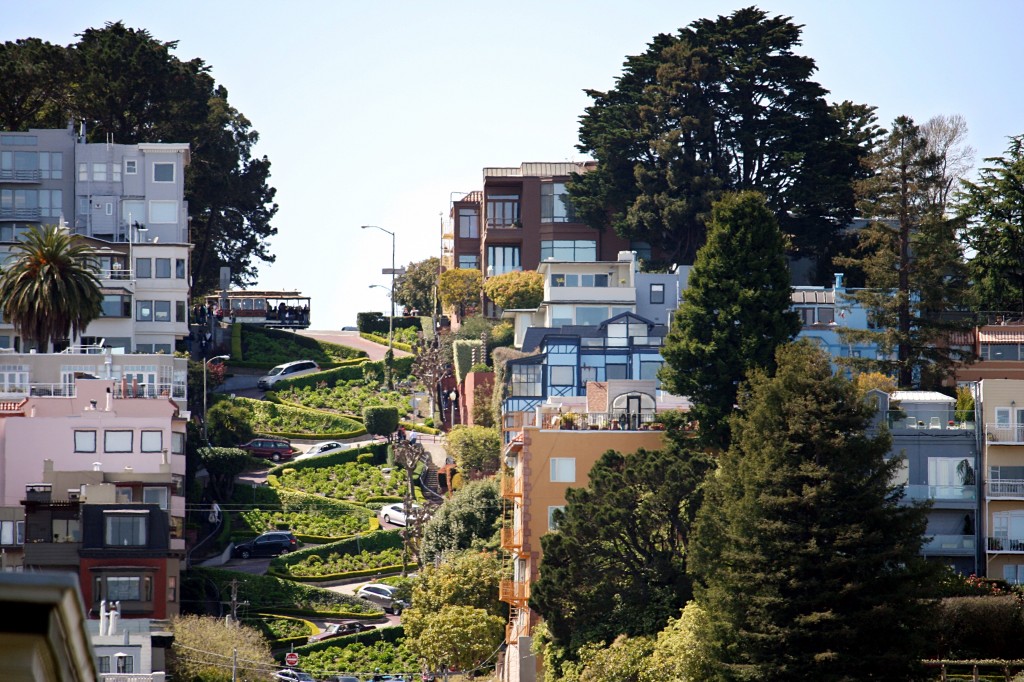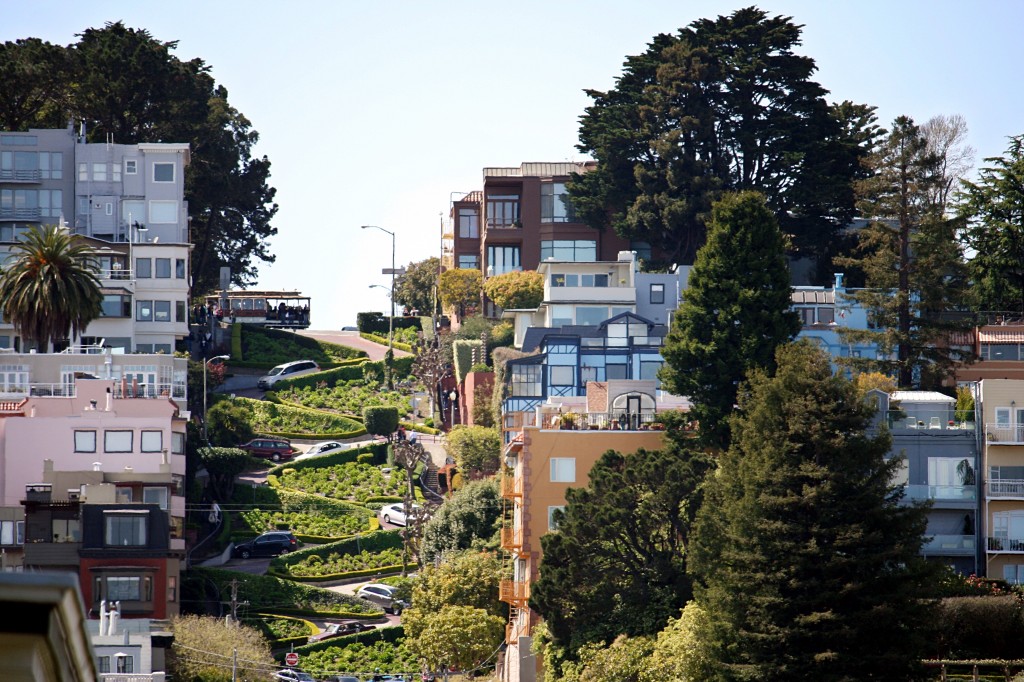The Hills of San Francisco : Part 1 – Pestec

Before the Golden Gate and Bay Bridges, before cable cars and Coit Tower, before Emperor Norton and other colorful characters, even before the first Ohlone tribes settled what is now the Mission District, there were the hills. The hills of San Francisco contribute as much to the City’s fame and character as do any other feature on the landscape.
Pestec’s Mosquito Abatement Courier (MAC) crew must ride on every City street in San Francisco, This means we ride up every hill in the City, usually to the top. Doing so is extremely challenging yet also rewarding and breathtaking … in every sense of the word.

Like Rome, San Francisco is said to be built on seven hills. San Francisco’s seven famous hills are Telegraph Hill, Russian Hill, Nob Hill, Rincon Hill, Mt. Davidson, Mt. Sutro and Twin Peaks (which are, as the name indicates, two hills) (1). But in reality, there are over 40 hills in San Francisco (2). Exact counts differ because there are different definitions of what a hill is. These forty something hills form the northern foothills of the Santa Cruz Mountains, the redwood, oak and chaparral covered range that divides San Francisco Bay from the Pacific Ocean. The hills rise from the ocean on bedrock of Franciscan radiolarian chert – in the western, central and southern parts of the City – and serpentinite in the northern and eastern areas (3).
Although two of San Francisco’s highest hills are called Mt. Davidson and Mt. Sutro, there are no true mountains within city limits. A mountain must rise at least 1,000 feet above the surrounding area. While Davidson and Sutro come close – 925 and 909 feet respectively – they are still technically hills.
Hills and mountains are venerated in many cultures as the meeting places of earth and the heavens. Famous examples include Mt. Sinai where Moses received the Ten Commandments and Mt. Olympus, home of the gods of Ancient Greece. The Ohlone people venerate Mt. Diablo (4). In recent times, Mt. Davidson – the City’s highest point – was crowned in 1934 by a 103 foot cross and in 1997 a plaque honoring the victims of the Armenian Holocaust was placed at its foot (5).
Hills are also cited in folklore as symbols of age; “as old as the hills” is a well known and self descriptive phrase. But hills not only subtly remind us of the value of old things; they also enhance what is built upon them. Imagine Coit Tower on the corner of 2nd and Market instead of atop Telegraph Hill with its commanding view of the Bay and both major bridges. Not so impressive, is it? Imagine riding a cable car along Howard Street instead of over Nob and Russian Hills. Much would be missing.
As pointed out in a previous article, the hardest day of bike messengering is more strenuous than the toughest day on the MAC team but because the average day on the MAC team is harder than the average day for messenger work, overall the MAC job is harder than messenger work. And it is the requirement of climbing every hill in the City that makes MAC work harder than messenger work. In addition to the physical demands of hill climbing, there are navigational challenges. A well planned navigation can minimize the number of ascents. Or such a plan will allow a MAC rider to climb a hill from the gradual side and then save the steepest side for the descent.
But when we do have to make those steep climbs, how do we do it? Hill climbs require a variety of tactics and depends on the physical length and steepness as well as wind direction and speed. There are many sources about hill riding in print and online and a few are listed at the bottom of this article (6).
For the steepest hills I suggest getting in your lowest gear as you begin the ascent. Keep your arms fairly straight but not rigid. Flex your feet with the balls of your feet on the pedals. This technique is called “ankling” and is good for riding in general not just up hills. Keep your back straight but you might want to look down. This is so you can see any obstacles on the pavement. And many riders also do so in order not to be discouraged by seeing how much hill remains before reaching the top.
It is against traffic laws to ride on the sidewalk but it does have the safety advantage of getting out of traffic. So if you feel that you absolutely must ascend on a sidewalk, keep these two points in mind:
1. Go slow but steady; as my grandfather often said: “If you’re gonna cheat, cheat fair!” Even if there are no pedestrians, one or more may appear suddenly.
2. If pedestrians do appear, give them a wide berth or better yet, dismount and walk.
And that last point brings up a more general one about hill climbs with or without pedestrians: You can always walk! That’s another beautiful thing about bikes. You control them, they don’t control you. If your bike breaks down or you just don’t feel like riding the last few yards of a 25% grade, you can walk your bike. You don’t have to worry about leaving it in some place where it might get a ticket – or worse.
By Howard Williams. Veteran MAC Team Member.
PART 2 TO FOLLOW
Footnotes
- Wikipedia entry: “List of cities claimed to be built on seven hills”
- Wikipedia entry: “List of hills in San Francisco”
- Ibid.
- www.foundsf.org/index.php?title=ROCKS
www.foundsf.org/index.php?title=Serpentine_Grasslands_and_Maritime_Chaparral - Wikipedia entries: “Ohlone people” and “Mt. Diablo”
- Wikipedia entry: “Mt. Davidson”
- active.com/Articles/9-Cycling-Tips-for-Better-Hill-Climbing.html
rei.com/learn/expert/advice/climb-hill.html
roadbikereview.com/racing-training-nutrition-triathlons/hill-climb-tips-235282.html